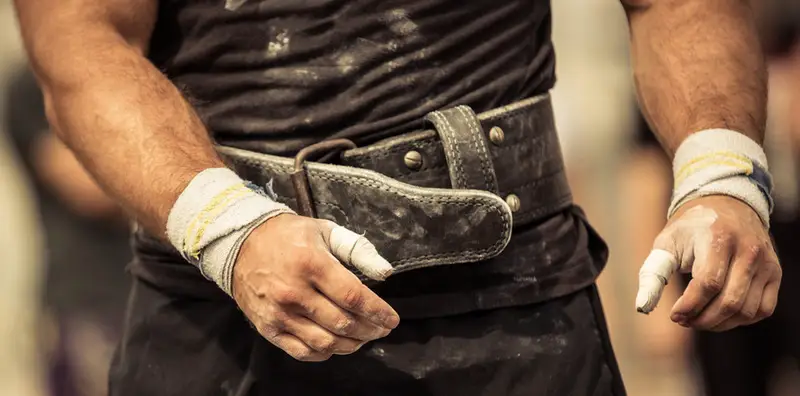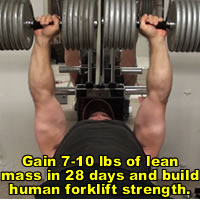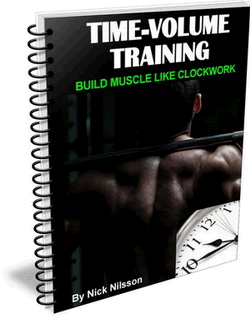If you walk into any commercial gym, you will likely see at least a few people wearing a belt while doing squats, overhead presses, or deadlifts.
Naturally, you might find yourself wondering what the benefits of a lifting belt are and what other exercises could be performed with it.
Technically, any exercise can be performed while wearing the belt (with the exception of the movements that target your core muscles), but very few actually benefit from having a belt on. In this particular, we’re going to talk about whether a lifting belt is needed for the bench press specifically and whether it can help boost your performance during this particular movement.

So, if that sounds like something you’d be interested in learning more about, then let’s dive right in.
Should You Wear a Belt for Bench Press?
The short answer is loud and clear: yes. The longer version goes like this: according to research, wearing a lifting belt while performing a bench press can help you recruit the muscles in your core and legs, thus allowing you to be more stable, create a stronger arch and generate more force.
On top of that, for many lifters, the feeling of wearing a belt gives them an extra boost of confidence that they can lift a higher load, which further helps. Finally, wearing a belt can help with reducing lower back pain and fatigue, but it’s not a crutch - so if you’re having long-term issues, it’s better to pay a visit to your doctor instead of masking them.
Why Science States Wearing a Belt Is Beneficial for Bench Press?
If you have an arch while bench pressing (the movement that requires your lower back not to touch the bench), then it’s highly likely you’re recruiting your core and leg muscles to remain during the exercise in that arched position. According to research, if you wear a belt while doing squats and deadlifts, it will help you use the muscle fibers in your core and leg muscles, and while the same studies haven’t been conducted specifically for the bench press, following simple logic, you can come to the conclusion that it will do the same in this scenario as well.
Basically, if you’re performing the bench press with the correct technique, wearing a belt can help you use the muscles of your legs and your core more effectively, thus increasing your ability to lift heavier loads. Having said that, a lifting belt is not some magical accessory that will automatically improve your bench by 20% - it’s just another tool that can be used to make your training more effective and also safer.
When Should You Wear Your Belt for Bench Press
If you’re just starting to incorporate wearing a lifting belt for your training sessions, we’d recommend you start putting it on during your warm-up sets. Unlike the squat and the deadlift, where it’s more beneficial to perform a larger portion of your workload without a belt, here it’s better to begin wearing the belt as soon as you can, as you will have to get adjusted to wearing it and still maintaining proper form throughout the movement.
However, once you get used to training with the belt, it’s again good to go back to doing most of the work beltless and then incorporating it once you start going above 60% of your maximum or only when you’re doing a challenging set for many reps.
What Kind of Lifting Belt Should You Look to Get?
As you can see, if you search on Google, you will find leather belts, powerlifting belts, once made from a very thick material, others that are softer, and so it’s difficult to determine which kind is the one you need. Typically, a great belt ranges in the regular 10 to 13 mm in thickness and around 4 inches in width - that’s more than enough support for all the basic compound movements. Additionally, it’s good to stick to brands you know and already have purchased products from, as otherwise, you’re risking compromised quality, which is never a good idea considering lifting belts tends to be somewhat pricey.
Finally, it’s good to remember that regardless of how great the belt is, you will still have to wear it around so that it loosens up and molds to your body - so if you feel uncomfortable during the first few sessions, just give it some time.
In Conclusion
Hopefully, our article helped you learn more about lifting with a belt on. And so, by now, you know that doing so can be beneficial for your lifting - not only can it help you increase the amount of weight you’re using, but it can also aid you in improving your form and engaging your entire body throughout the movement.
![]()
More From Fitstep.com
Share This Page...
---
Home -> Muscle and Strength -> Tips and Articles -> Use a Belt For Bench Press?



